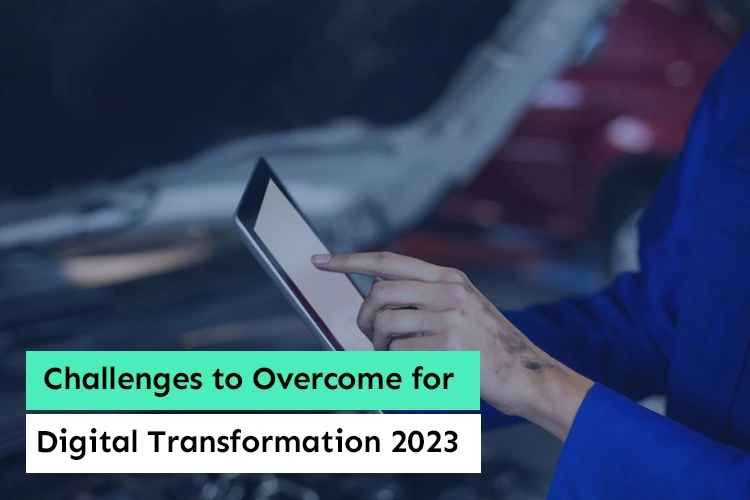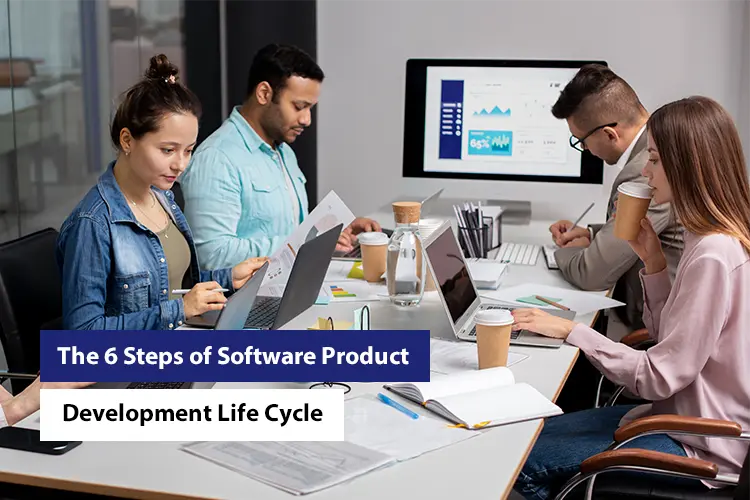6 Main Stages of the Software Product Development Lifecycle

You may not know that over 60% of software projects fail to meet the expected goals due to poor planning and implementation. What makes SDLC so significant is that it executes a very structured approach, ensuring quality, efficiency, and user satisfaction at every step, from the idea to launch and then to post-launch.
Imenso Software provides over 500 successful software development projects and is aware firsthand of the force that SDLC embodies. Whether it’s a start-up or enterprise-level organization, the perfect handling of these critical stages can be the difference between an application that thrives and caters to users or one that outright fails.
In this detailed corporate blog, we will break down the 6 major phases of the Software Product Development Lifecycle, offer you insights and best practices on these stages, and give you a glimpse into how Imenso Software can guide you through each one. You will have by the end a clear understanding of this tried and tested framework to ensure your business reaches its software goals.
Understanding the Software Product Development Lifecycle

SDLC forms the structured framework by which, step by step, software development starts from its very inception till launch and beyond. It can be considered as the roadmap that keeps a team on track, mitigates risk, and ensures that what one finally creates meets the needs of his user.
Mastering SDLC is paramount for businesses of all sizes and here is why:
Reduces Risks: There are checkpoints and loops of feedback in each stage so that problems are identified and rectified in time before it incurs heavy losses later.
Improves Efficiency: SDLC presents a defined plan, along with defined roles, and hence it helps teams to work more efficiently in software development.
Ensures Quality: It makes sure that the final products will have a reputation for reliability, security, and high usability. This is due to strict tests as well as continuous improvement cycles of software.
Enhances User Satisfaction: The SDLC will ensure that you build a solution that actually meets customers’ needs, as it focuses on the needs of the user and captures feedback at every stage.
Now, let’s get into the 6 core stages of the Software Product Development Lifecycle:
Stages of the Software Product Development Lifecycle

A successful software product is not developed in one step but rather through many stages that significantly contribute to transforming an idea into a fully functional and reliable software solution. Let’s take a look at each of these six stages.
Planning & Analysis
Objective: At this stage, the aim is to get an in-depth understanding of the problem you are trying to solve and define the roadmap clearly through which you will solve the problem
Key Activities
- Market Research: Find out about your competitors, gaps in the market, needs of the people for whom you are developing a product.
- Stakeholder Interviews: Engage with the key stakeholders like executives, end-users, and subject matter experts; gather comprehensive requirements from them.
- Feasibility Study: Technical and financial feasibility of the project to match your business objectives and capabilities.
Risk Analysis: Details of the risks and strategies for mitigation or avoidance so that there is proper preparedness on the part of the team for differences and challenges that may arise.
Outcome: The final Project Requirements Document, would constitute a very comprehensive outline of all requirements, and this would actually form the overall roadmap for the project, which would set the stage for success.
Why It Matters: Planning is the backbone of a successful software project. Projects that are planned clearly have a 28% higher chance of success according to the Project Management Institute. Here at Imenso Software we especially stand out in this category. We do this because we work exclusively on deep market insights and strategic planning so that your project will have the desired long-term success.
Design
Objective: Take the requirements and develop them into visual and technical specifications guiding the development work.
Key Activities
- UI/UX Design: Design user-centric interfaces coupled with a seamless user experience that delights your users.
- System Architecture: Define how separate software components will interact and scale in terms of maintainability.
- Wireframing and Prototyping: Have an early stab at the various models through the building of prototypes that help envision the product and get early feedback.
- Tech Stack Selection: The tools and technologies that could be used for development would be considered by the relevance of factors like performance, security, and future growth.
Outcome: Design documents of wireframes and prototypes, ready to go for the development stage.
Why It Matters: Design is not only beautiful but also about the crafting of creating something that is intuitive, efficient, and solves real problems in the lives of your users. Here at Imenso Software, our in-house design team boasts an incredible combination of creativity with functionality. It speaks for itself, with over 200 glowing reviews on Clutch.
Development
Objective: Develop clean, efficient, and scalable code to bring the design to life
Key Activities
- Front-End Development: The front end will be built using the newest technologies like React, Angular, or Vue.js.
- Back-End Development: Server-side logic will include developing databases to power the application.
- API Development: A set of strong APIs will be developed for the corresponding software components so they can work seamlessly with one another.
- Version Control: Implement techniques like Git to handle changes in codes. The development team should be able to develop on the same code line without interference or conflict.
Outcome: Developing software that is responsive to design and meets requirements.
Why It Matters: SDLC development is at the heart of this process. A well-developed product is strong, scalable, and secure. Highly experienced developers at Imenso Software are highly skilled in a wide range of technologies from the MERN stack, all the way to custom development. We take pride in converting designs to apps with exceptional performance that bring delight to our clients.
Testing
Objective: Testing the software to ensure that it works and does not contain bugs.
Key Activities
- Unit Testing: It ensures individual components of software work correctly as per specifications.
- Integration Testing: All components are combined and checked so that they work properly together without any integration problems.
- Performance Testing: Testing how an application responds to various loads and stress.
- Security Testing: Varying vulnerabilities in an application to secure an application and data held within it.
- User Acceptance Testing: Test with real users to ensure that the product developed meets the needs and expectations of those users.
Outcome: Delivered product that shines, and is delivered with high quality and dependability.
Why It Matters: Testing is not a formal exercise, but it is an activity critical to ascertaining the quality and stability of your software. In fact, according to IBM, bugs fixed at testing cost anywhere between 4 to 5 times less than bugs fixed post-deployment. Imenso Software follows a very stringent process so that the software delivered turns out to be ‘bug-free’, thereby increasing our possibilities of delivering more than the expectations set by our clients.
Deployment
Objective: The target now is to deploy the software to users and to make the application live in the real world.
Key Activities
- Environment Setup: Configuration of required servers, databases, and infrastructure to support the application.
- Data Migration: Transfer of data with no jarring effect from the old system to the new software.
- Release Management: Planning and executing release strategy whether soft launch or full-scale deployment.
- Monitoring: Interprets real-world deployment environment very seriously for performance issues.
Outcome: Live, accessible product wherein users can start interacting and benefiting from it.
Why It Matters: The smoother the deployment process is, the more likely the success of your project will be, as well as the happy users in the long run. Downtime and glitches can make reputations suffer from such crises and destroy trust with your users. Imenso ensures a seamless deployment process that will help in launching your product with confidence, setting up a platform for continued growth.
Maintenance & Updates
Objective: To make sure the software is working correctly and helping in altering user and market requirements.
Key Activities
- Bug Fixing: Tackle all the bugs that are reported after the release to ensure that the software remains stable and reliable.
- Performance Monitoring: Use analytics and user feedback reports to monitor the performance of the software at different levels so improvements can be initiated.
- Regular Updates: Constant upgrade of its features, enhancement of existing functionality, and keeping pace with the latest trends and technologies.
- User Feedback: Collecting user suggestions for improvement in a place and time manner, thus keeping your product fresh and rich in value over time.
Outcome: Software will remain reliable, secure, and easy to use, hence possessing lasting value to your customers.
Why It Matters: Software is never really “finished.” To make sure your product feels fresh, current, and competitive, scheduled maintenance and updates are essential to keep pace with customers as their needs grow and evolve. Imenso Software comprehensively addresses the post-launch support that will help keep your software at its best.
The Importance of Following a Structured Lifecycle

Why do you believe SDLC is very critical to the success of your software project? Consider these key benefits:
Improved Quality: Software development under a structured approach means that testing and quality checks are definitely done. It will always make products more reliable and friendly to users.
Better Collaboration: Having a more defined role, responsibility, and even how things would be able to be accomplished unites a team to a common goal.
Cost Efficiency: The early detection of issues of SDLC helps avoid the costly “rework” and “mistakes,” saving you time as well as money in the long run.
Customer Satisfaction: Building a strong focus on user needs through continuous gathering of feedback, SDLC helps you deliver appropriate software that exactly meets your customer’s needs, hence pushing for higher satisfaction and retention.
A report by the Standish Group says that projects that follow a structured SDLC have a 45% likelihood of delivering value to stakeholders. We are proud at Imenso Software to be following this proven framework, helping our clients achieve outstanding results time and time again.
Your Software Success Starts Here

Building a successful software product is quite a complex journey, but having the right roadmap makes the odds shine in your favor, and mastering the 6 main stages of the Software Product Development Lifecycle will ensure that you are always on track, achieving all your goals, and delivering maximum real value to your users.
At Imenso Software, over 500 businesses have walked the route confidently. From planning to design through development, testing, deployment, and later on, maintenance, our experts will be with you at every step of the way.
Are you ready to bring your software vision to life? Contact Imenso Software today and let’s create something amazing together.
FAQs
What is the Software Product Development Lifecycle?
Software product development lifecycle is an engineered process for planning, developing, testing, deploying, and maintenance of software. So with SDLC, projects will be completed in an efficient manner, also incorporating both business and user requirements.
Why is the SDLC important for software development?
SDLC helps manage the complexity of the project in a way to produces consistency, quality, and timely delivery. It reduces risk, improves the collaboration tool, and provides continuous improvement, hence predictability and cost-effectiveness.
How is the design stage different from the development stage?
The design stage involves the design stage to create wireframes, system architecture, and UI/UX layouts. The development stage entails coding and building the actual software product to take designs into a working product.
Can skipping a stage in the SDLC impact the project?
Yes, omitting one of the stages, could result in low quality, inflated costs, and late timelines, and will also cause security breaches. All stages are essential to ensure that the final product meets requirements and performs as expected.
How long does it take to complete the entire SDLC?
The time span of SDLC differs in every project: its complexity, scope, and the people working on it. Smaller projects take several months whereas bigger, complex projects may take a year or more.
What industries benefit most from following the SDLC?
Healthcare, finance, e-commerce, educational institutions, and technology industries all highly benefit from the SDLC. It provides their software with reliability and safety, as well as strict rules and functional requirements.
How do I know which SDLC model is best for my project?
The selection of the SDLC model relies upon the scope, time schedule, and flexibility needs of your project. For projects with iterative requirements, Agile is ideal whereas for projects with fixed requirements, Waterfall is ideal. To ensure you make the proper choice, you should consult experts.
How can the SDLC reduce development costs?
The structured approach helps in the identification of problems early, avoiding costly rework. It also optimizes resource allocation, improvements in project timelines, and ensures quality software, which reduces the overall cost of development.
We’re honored to mention that our efforts have been recognized by renowned B2B review and research platforms such as GoodFirms, Clutch, MirrorView, and many more.
Want more information about our services?
Similar Posts

Challenges to Overcome for Digital Transformation 2023
As the year 2023 approaches, businesses must define a route in a market marked by extraordinary difficulties and unrivaled opportunities brought about by technology. Whether you own a small business or a startup, digital transformation is inevitable. It seeks to transform your organization and its assets digitally to increase efficiency. AI, IoT, and big data […]...

Top 10 Software Development Methodologies to Choose from
When creating software, how you approach the project affects the output significantly. Ideally, you have to strike a balance between speed and structure, rigidity and flexibility. The software needs to be market-ready with the least deviation possible. You also have to minimise risk, reduce the chances of errors, and meet the deadlines without ever compromising […]...

The 6 Steps of Software Product Development Life Cycle
The Software Product Development Life Cycle (SDLC) represents a structured approach to crafting software solutions, guiding them from conception to deployment and beyond. Each phase of the SDLC is crucial, providing a framework for teams to collaborate, innovate, and deliver high-quality products that meet user needs and business objectives. Among these phases, maintenance, and support […]...








